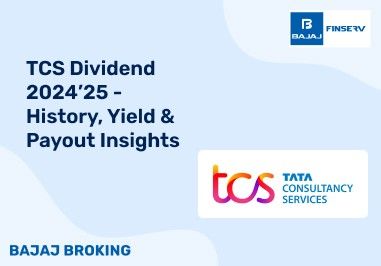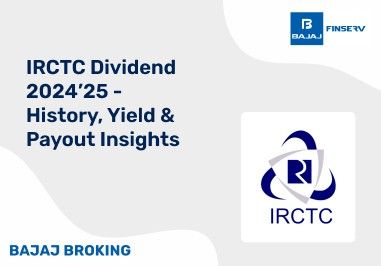Characteristics of Recession-Proof Investment Strategies
The term “recession proof” is used to define an asset, industry, company, or any entity which is believed to be resistant to the impacts of the recession. Recession proof investment strategies involve adding recession proof stocks to your investment portfolio so that it could remain safeguarded during recessions.
Diversification – A well-diversified portfolio spreads risk across multiple asset classes, reducing the impact of a downturn in any single sector.
Defensive Stocks – Investing in sectors like healthcare, consumer staples, and utilities, which provide essential goods and services, ensures stability during economic downturns.
Dividend-Paying Stocks – Companies with a history of consistent dividend payments offer a steady income stream even when stock prices decline.
Fixed-Income Investments – Bonds, especially government and high-quality corporate bonds, tend to be less volatile and provide steady returns during recessions.
Precious Metals and Commodities – Gold, silver, and other commodities often act as safe havens, preserving value when markets are unstable.
Real Estate Investment – Investing in rental properties or Real Estate Investment Trusts (REITs) can generate passive income and hedge against inflation.
Cash and Liquid Assets – Maintaining sufficient cash reserves allows investors to seize opportunities when asset prices drop.
Low Debt and Strong Fundamentals – Companies with low debt levels and strong balance sheets are more likely to withstand economic downturns.
Long-Term Perspective – Focusing on long-term investments rather than short-term market fluctuations helps mitigate risks and maximize returns over time.
Alternative Investments – Hedge funds, private equity, and other alternative investments may offer resilience during market volatility.
A strategic combination of these approaches can help investors safeguard their portfolios against recessionary risks.
Diversifying Your Portfolio: Asset Classes to Consider
Recessions are known to be relatively rare, but have the capacity to expose an economy and portfolios to possibly rapid declines, thus leading to the growth of risk aversion among companies and investors. As and when there is a rise in the excess returns that an investor requires over risk-free assets, the prices of risk assets begin to decline. The asset classes, however, which come with returns that are less reliant on the growth of an economy, tend to outperform.
For example, gold and bonds, and investment-grade corporates, have been historically known to fare the best in times of recessions. On the other hand, it has been observed that high-yield bonds and commodities tend to suffer along with stocks.
The following are some asset classes that you can take a look at before deciding on where you want to make investments, and how you can diversify:
Asset Class
| Description
| Examples
| Risk Level
| Return Potential
|
Cash & Cash Equivalents
| Highly liquid assets with minimal risk, often used for short-term savings.
| Savings accounts, U.S. Treasury bills (T-bills), money market funds, GICs
| Very Low
| Low
|
Fixed Income
| Investments that pay a fixed interest rate over time, usually less risky than equities.
| Government bonds, corporate bonds, municipal bonds
| Low to Moderate
| Moderate
|
Equities (Stocks)
| Ownership in a company that offers potential capital gains and dividends.
| Common stocks, preferred stocks, index funds
| Moderate to High
| High
|
Commodities
| Physical goods traded in markets; prices depend on supply and demand.
| Gold, silver, oil, natural gas, agricultural products
| Moderate to High
| Variable
|
Real Estate
| Investment in physical property, generating rental income or capital appreciation.
| Residential properties, commercial real estate, REITs
| Moderate
| Moderate to High
|
Alternative Investments
| Non-traditional assets, often less liquid but potentially lucrative.
| Hedge funds, venture capital, private equity, cryptocurrencies, collectibles
| High
| High
|
Defensive Stocks: Stability During Economic Downturns
Defensive stocks can be defined as the shares which provide stable returns in the form of consistent dividends, without altering due to fluctuations in the stock market. Defensive stocks are owned by industries that produce products which remain in demand, no matter the market conditions. It is due to this constant and consistent demand of these products, that defensive stocks remain stable during the times of economic volatility. There are substantial benefits of long-term gains offered by these stocks, and they come with lower risks compared to other stocks.
Some of the industries covered by defensive stocks include utilities, healthcare, and consumer staples. The consumer staples sector is known to have historically outperformed during recessions, as it deals with supplying products that consumers will continue to buy, regardless of the market conditions or the consumers’ financial condition. These consumer staples include food, household goods, beverages, toiletries, tobacco, and alcohol. Utilities such as water, gas, and electricity are among the basic requirements of every consumer. The demand of these remains unchanged, even in the times of market downturns. Shares of the top pharmaceutical companies and medical device manufacturers are also known as defensive stocks. These stocks are non-cyclical, because there is always a need for medical and healthcare services, no matter what the market conditions are.
Bonds and Fixed Income Securities: Safe Havens Explained
Government bonds in particular are known to be one of the safer assets where investors choose to preserve their capital. They tend to perform well at the times of economic downturns. Bonds and fixed income securities are considered to be “safe haven” investments due to the fact that they tend to maintain, or at times increase in value, during the times of economic turmoil. This is primarily because of their relatively stable returns, and the low risks associated with bonds that are issued by the government.
Treasury bills are debt securities which are also known to be a safe haven during recessions. Treasury bills, also known as T-bills, are known to be risk-free because any principal amount that is invested in them is repaid by the government at the time of maturity.
Alternative Investments: Gold, Real Estate, and More
Alternative investments such as gold, real estate, and others can help you in diversifying your investor portfolio, and could be beneficial during market volatilities. Gold is considered to be a store of value. The value of gold remains unchanged by rising interest rates or other decisions made by the government. Historically having maintained its value over time, gold serves as a kind of insurance against recessions. Investors can choose to pile up their funds into gold, which would continue to drive up its price with time.
As gold is priced in US dollars, its value increases every time there is a threat of inflation. There are also other commodities including silver, sugar, copper, livestock, and corn, which are negatively correlated with bonds and stocks, and could also serve as safe havens for investors.
Real estate is another alternative investment which includes investing in property-based securities or physical properties. It often also includes investments being made in real estate crowdfunding platforms, real estate mutual funds, or real estate investment trusts (or REITs). As an investor, you could enjoy not only capital appreciation of a tangible asset, but also gain ongoing stable cash flow.
Implementing Dollar-Cost Averaging in a Recession
Dollar-cost averaging is a strategy that can be used to deal with uncertain markets in an easier way. Dollar-cost averaging can be used by investing the same amount of funds in a target security over a certain period of time and at regular intervals, regardless of the price. Dollar-cost averaging can be used by you as an investor to lower your average cost per share, thereby reducing the impact that volatility may have on your portfolio.
Dollar-cost averaging is a tool that you can use to build wealth and savings over a longer period of time. You can use it to ignore short-term volatility in the markets. If you are a beginner when it comes to investments, this tool might be particularly useful in terms of making decisions while not yet having the expertise to judge what is the most beneficial time to buy stocks. Dollar-cost averaging not only reinforces the practice of making investments on a regular basis to build wealth over a period of time, but is also automated and removes the challenges of market timing.
Common Mistakes to Avoid in Recessionary Periods
It is important for you as an investor to be aware of the assets that are to be avoided during recessionary periods. Companies that are cyclical, highly leveraged, or speculative are the ones that come with the biggest risk during recessions.
Highly leveraged companies: As an investor, you must avoid highly leveraged companies which have huge debt loads on their balance sheets during a recession. These companies tend to suffer due to being burdened with interest payments that are higher than the average, which often lead to unsustainable debt-to-equity ratios. These companies, while struggling with making their debt payments, also face a decrease in revenue due to recessions. There is a much higher likelihood of bankruptcy when it comes to such companies.
Cyclical stocks: These stocks are known to be tied to employment as well as consumer confidence, which get damaged during a recession. Cyclical stocks are known to perform well during booms when consumers have an income that they are able to spend on luxury or non-essential products. These include companies that are manufacturers of high-end furniture, clothing, or cars. At the time of a recession, consumers tend to cut back on their spendings on discretionary expenses. Cyclical stocks, therefore, become less attractive investments during a recession.
Speculative stocks: Speculative shares are frequently dependent on investor optimism, with their prices determined by future growth prospects instead of proven financial results. They are perceived as a means to take advantage of new trends or breakthroughs. But during times of recession, this hope is tested. With increasing economic uncertainty, investors look for the safety of more conservative assets, causing speculative shares to suffer some of the greatest falls. Their high-risk nature leaves them particularly exposed to market decline, when capital protection is of primary concern to investors.
Case Studies: Successful Investment Strategies During Recessions
While investors may be considering riding out a recession with zero exposure to sticks, it might result in them missing out on crucial opportunities on doing so. There have been observations of certain kinds of companies that tend to do well at times of economic downturns. As an investor, you may choose to develop strategies that are based on countercyclical stocks that have strong balance sheets in industries that are resistant to recessions.
One of the successful investment strategies often used during recessions by investors is to choose companies which have maintained strong balance sheets, and those which have a steady business model regardless of economic turmoil. For example, companies that manufacture utilities, basic consumer goods, as well as defense stocks. When in anticipation of weakening economic stability, you may consider adding exposure to such groups in your portfolio. You would be able to determine whether a company has low debt, is generating profits, and has healthy cash flow by closely monitoring its financial reports.
As much as it may sound surprising, some industries tend to perform well enough during a recession. If you are looking for investment strategies during a recession, you need to add some recession-resistant stocks to your portfolio. Countercyclical stocks such as these perform well during economic downturns because of an increase in their demand at these times. The price of countercyclical stocks usually tend to move in the opposite direction.













